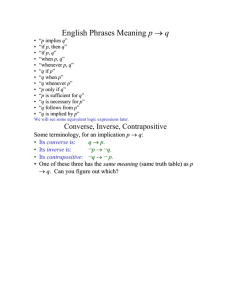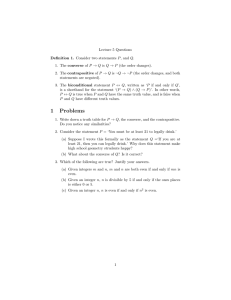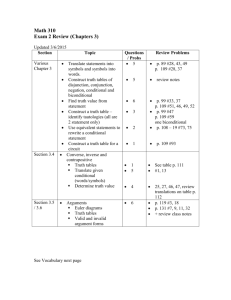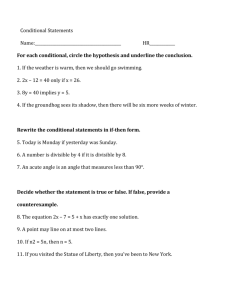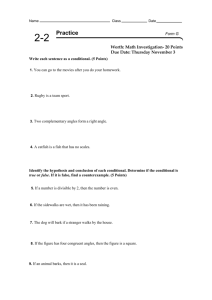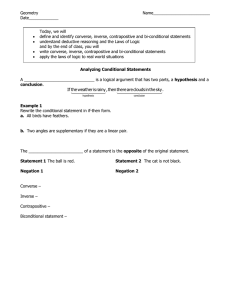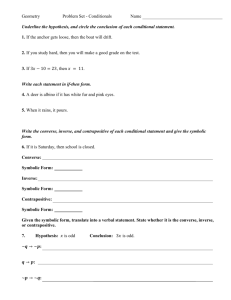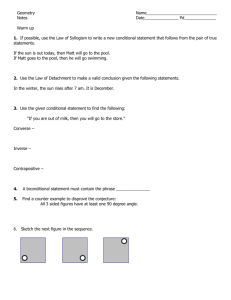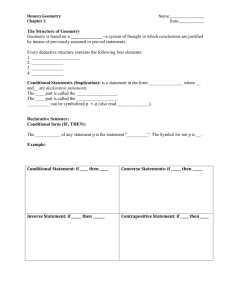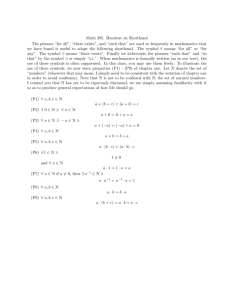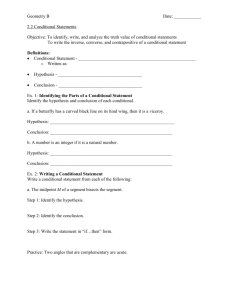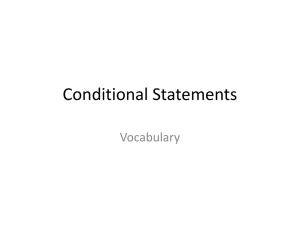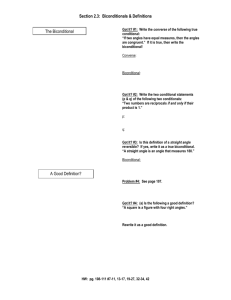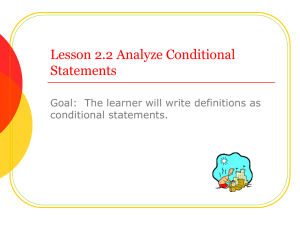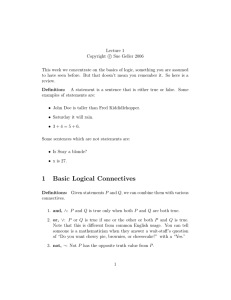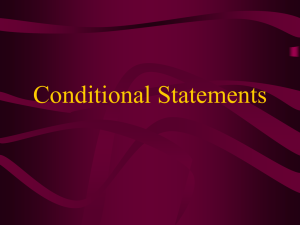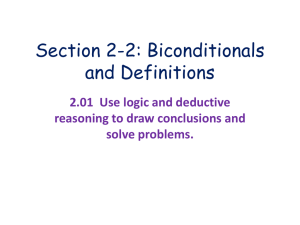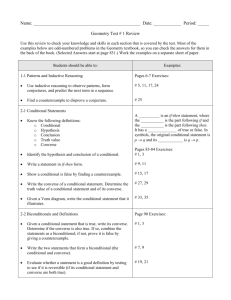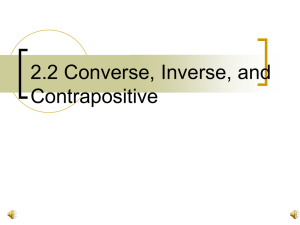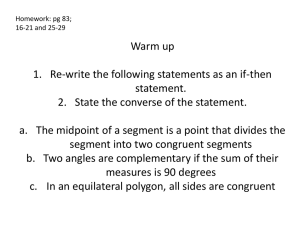p q
advertisement
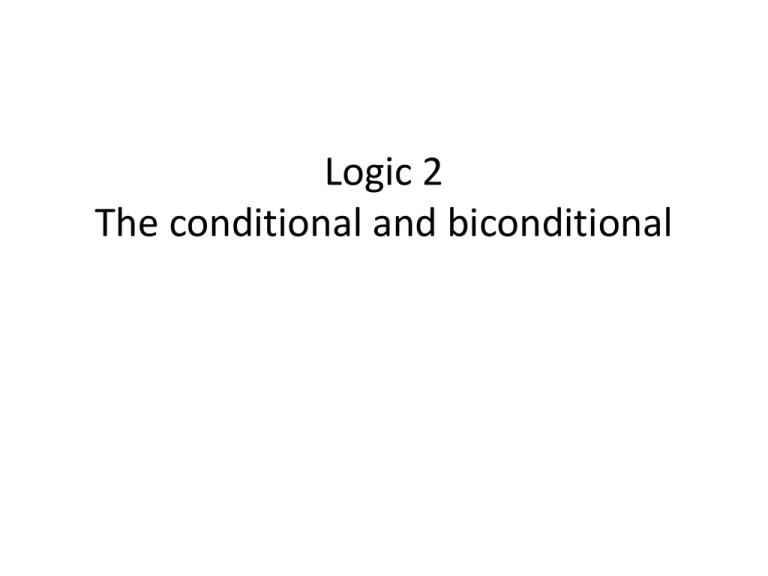
Logic 2 The conditional and biconditional The Conditional • Consider two statements, p and q. • If p being true always leads to q being true, we have a conditional relationship “if p is true then q is true”, “if p then q”, “p q”. See Waner and Conenoble for other equivalent phrases. These all say the same thing, and have the following truth table: • P is the antecedent of hypothesis, q is the consequent or conclusion. Rules of the conditional • The only way p q is false is if p is true and q is false. Called a “broken promise.” • If p and q are both false, p q is true. • p q is true when p is false, no matter what the truth value of q. • True always implies true. If p and q are both true, then pq is true. • True can’t imply false. If p is true and q is false then pq is false. • False implies anything. If p is false, then pq is true no matter if q is true or not. The “switcheroo” law Show that p q (p)q This is often important for proofs. This implies that p q is true if either p is false or if q is true. Using DeMorgan’s Law, this also means that p q (p(q)) Important equivalencies of p q if p then q q follows from p q if p whenever p, q p is sufficient for q is the same as is the same as is the same as is the same as is the same as p implies q not p unless q p only if q q whenever p q is necessary for p Notice how p being a sufficient condition for q makes q a necessary condition for p. Exercise: Show that the commutative law does not hold for the conditional, that is that p q is not equivalent to q p using a truth table. The statement p q is called the converse of q p, and q p is the converse of p q. They are not equivalent. Exercises Give an example where the converse of a conditional is not true. (Think advertising). Give an example when the converse of a conditional is true. Contrapositive The contrapositive of p q is (q) (p) Exercise 1: Use truth tables to show a statement and its contrapositive are equivalent. Exercise 2: Use switcheroo and other properties to show a statement and its contrapositive are equivalent. p q (p)q q(p) (q)(p) (q) (p) switcheroo; commutative; double neg; switcheroo Exercise 3: Give the converse and contrapositive of the statement If you study hard you will get a good grade. Explain how the contrapositive can be interpreted as true, but not necessarily the converse. Converse: If you get a good grade you studied hard. Contrapositive: If you don’t get a good grade, you did not study hard. Biconditional The biconditional, written pq, is defined to be the statement (p q)(q p). With the true table Exercise: Use truth tables to show that pq (p q)(q p). Common phrasings for the biconditional • p if and only if q • p is necessary and equivalent for q • p is equivalent to q
